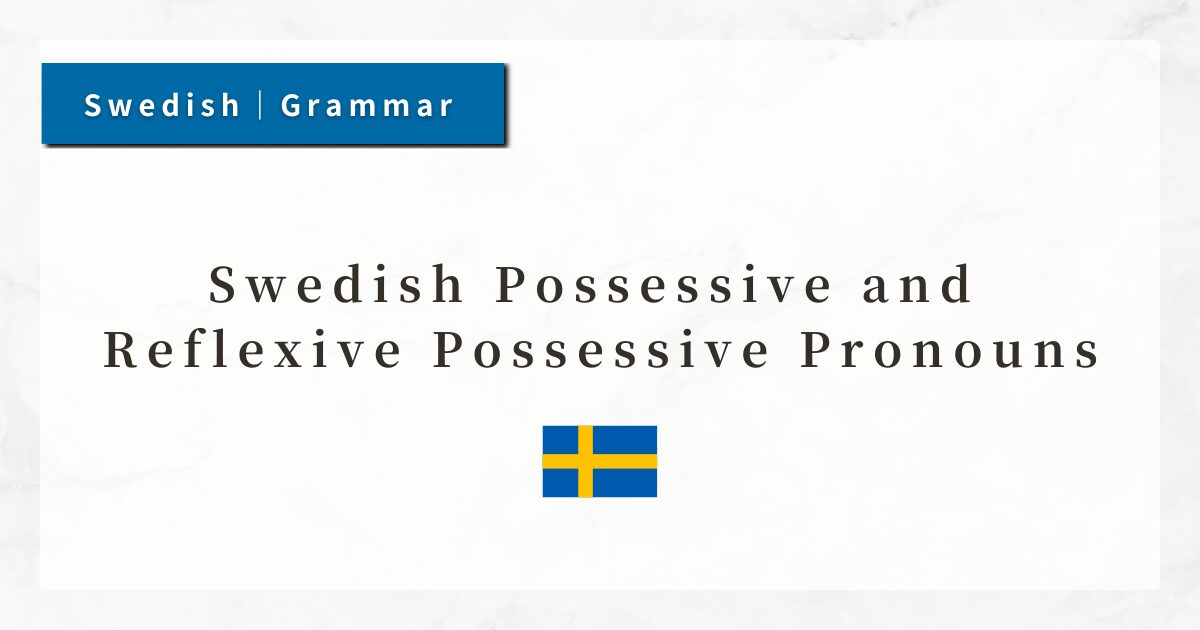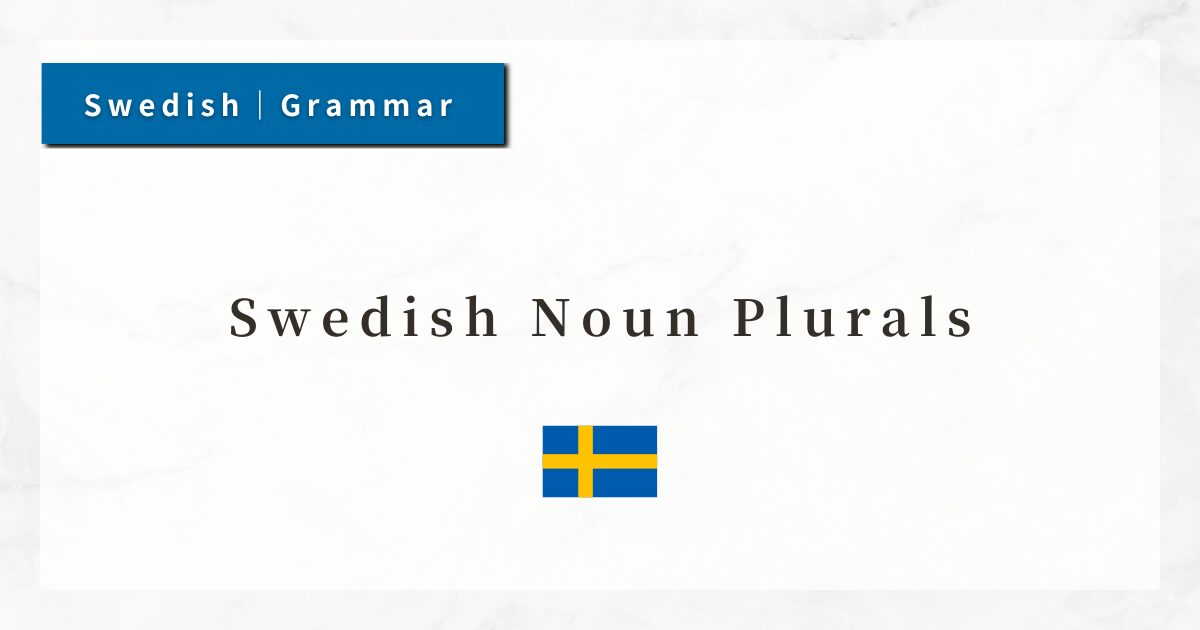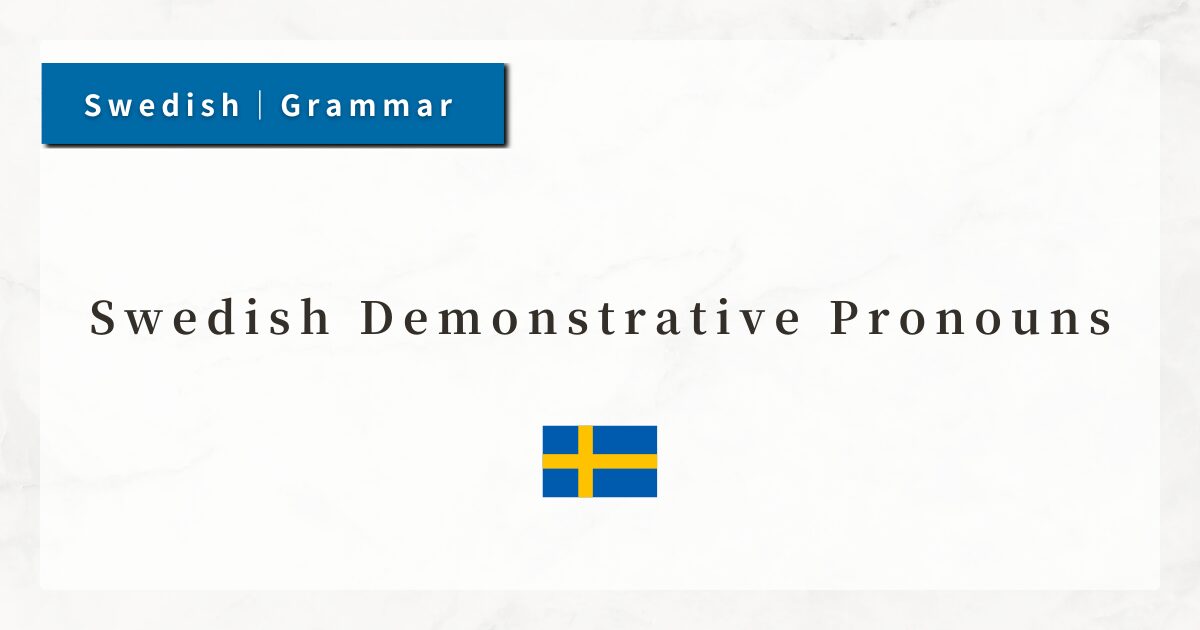#34 Swedish Possessive and Reflexive Possessive Pronouns|Rules and Examples

In Swedish, possessive pronouns such as “my,” “your,” “his,” “her” are used to indicate ownership.
A distinctive feature of Swedish is the reflexive possessive pronouns sin / sitt / sina, which are used when the subject and the possessor are the same person.
In this lesson, I will explain the basic usage of possessive pronouns, and then show the difference between them and reflexive possessive pronouns, including how to use them correctly.
1. Basic Possessive Pronouns
Swedish possessive pronouns change form depending not only on the person (I, you, he, etc.), but also on the gender (common/neuter) and number (singular/plural) of the noun they modify.
Here is the basic chart of possessive pronouns:
| Person | Possessive Pronouns (common / neuter / plural) | Meaning | Example |
|---|---|---|---|
| jag (I) | min / mitt / mina | my | min bok (my book) |
| du (you) | din / ditt / dina | your | ditt hus (your house) |
| han (he) | hans | his | hans bil (his car) |
| hon (she) | hennes | her | hennes vän (her friend) |
| vi (we) | vår / vårt / våra | our | vårt barn (our child) |
| ni (you, plural) | er / ert / era | your (pl.) | era böcker (your books) |
| de (they) | deras | their | deras hem (their home) |
For example, to say “my,” you must choose the correct form according to the gender and number of the noun:
- min (common gender noun)
→ min bok (my book) - mitt (neuter noun)
→ mitt hus (my house) - mina (plural noun)
→ mina böcker (my books)
However, the third-person pronouns (han, hon, de) use fixed forms (hans, hennes, deras), which do not change according to the gender or number of the following noun.
2. Reflexive Possessive Pronouns
2-1. Role of Reflexive Possessive Pronouns
One important feature of Swedish is the existence of reflexive possessive pronouns: sin, sitt, sina.
They are used only when the subject and the possessor are the same person.
- Han älskar sin hund.
(He loves his [own] dog)
Here, the subject (Han) and the possessor of the dog are the same, so sin is used.
2-2. Choosing Between sin / sitt / sina
Like regular possessive pronouns, reflexive pronouns change according to the gender and number of the noun they modify:
| Reflexive Pronoun | Used For |
|---|---|
| sin | common gender noun |
| sitt | neuter noun |
| sina | plural noun |
Examples:
- Hon tog sin väska.
(She took her [own] bag.)
→ väska is common gender → sin - Han har glömt sitt pass.
(He forgot his [own] passport.)
→ pass is neuter → sitt - De ringde till sina vänner.
(They called their [own] friends.)
→ vänner is plural → sina
3. Reflexive Possessives Are Used Only in the Third Person
Reflexive pronouns (sin, sitt, sina) are used only with third-person subjects (han, hon, de).
With first and second person subjects (jag, vi, du, ni), the normal possessive pronouns are used.
| Subject | Correct Pronoun | Example |
|---|---|---|
| jag (I) | min / mitt / mina | Jag älskar min hund. (I love my dog.) |
| du (you) | din / ditt / dina | Du har tappat ditt pass. (You lost your passport.) |
| han (he) | sin / sitt / sina | Han har tappat sitt pass. (He lost his [own] passport.) |
4. Comparing Possessive and Reflexive Possessive Pronouns
The distinction between third-person possessives (hans, hennes, deras) and reflexive pronouns (sin, sitt, sina) is crucial.
Subject and possessor are the same → reflexive pronoun
- Han glömde sitt paraply.
(He forgot his [own] umbrella.)
Subject and possessor are different → regular possessive pronoun
- Hon tog hans paraply av misstag.
(She mistakenly took his umbrella.)
Thus, the choice depends on whether the subject and the possessor refer to the same person.
5. Summary
- Possessive pronouns (min, ditt, vår, etc.) indicate ownership, and change according to gender and number of the noun.
- Reflexive pronouns (sin / sitt / sina) are used only when the subject and the possessor are the same.
- Regular possessives (hans, hennes, deras) are used when the subject and the possessor are different.
- In third person, using reflexive possessives correctly is essential to avoid ambiguity.




